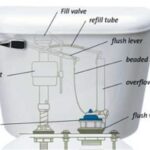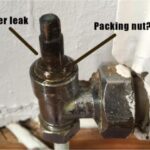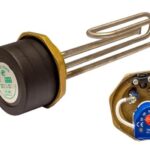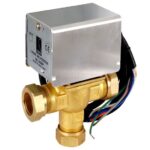The practical no frills guide.
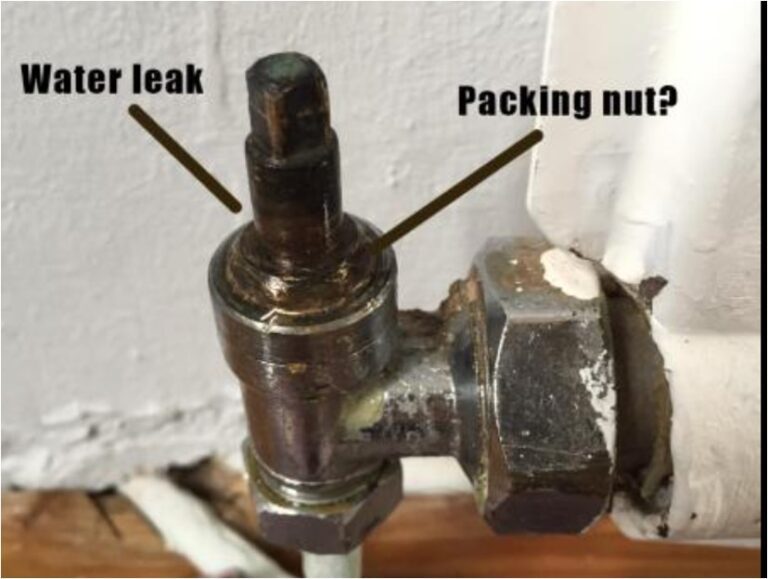
Radiator valves play a crucial role in regulating the flow of hot water through your heating system, ensuring each room is comfortably heated.
However, like any mechanical component, radiator valves can encounter issues over time that affect their performance.
Instead of immediately considering a replacement, understanding how to troubleshoot and repair common radiator valve problems can save you both time and money.
In Mastering radiator valve repair – the no frills guide, we’ll look at the anatomy of radiator valves, delve into common issues, and provide a step-by-step approach to troubleshooting and repair.
Before undertaking any/all plumbing, heating or related work you should always take your own independent professional advice.

Plumber - Paul
Paul's a member of the Chartered Institute of Plumbing & Heating Engineers, Water Regs UK (formerley WRAS – Water Regulations Advsiory Scheme) certificated as well as a qualified unvented cylinder engineer and a qualified heat pump engineer.
Understanding radiator valves
Before diving into radiator valve repair, it’s important to understand the different types of valve you may have in your home and their components.
Manual Radiator Valves. Controlled by a simple knob or lever.
Thermostatic Radiator Valves (TRVs). Automatically adjust the flow based on room temperature.
Radiator valve components
Body. The main housing of the valve.
Valve head. Controls the opening and closing of the valve.
Spindle. Connects the valve head to the body.
Packing gland nut. Secures the spindle and prevents leaks.
O-ring. Provides a watertight seal.
Why repair a radiator valve?
Repairing a radiator valve can be necessary for a number of reasons, and will improve the efficiency and performance of your heating system. Here are some common reasons why you might need to repair a radiator valve:
Age and wear
Like any mechanical component, radiator valves have a lifespan. If your system is old, the valves may become less effective over time. Repairing or replacing worn-out valves can improve the overall performance of the heating system.
Corrosion
Over time, radiator valves can corrode, especially in older systems. Corrosion can lead to leaks and reduced efficiency. Repairing or replacing the valve can address this issue.
Energy efficiency
A faulty radiator valve can contribute to an inefficient heating system, leading to higher energy bills. Repairing or replacing the valve can improve energy efficiency and reduce operating costs.
Temperature control
Radiator valves allow you to control the temperature in individual rooms. A malfunctioning valve may prevent you from adjusting the heat, leading to discomfort. Repairing or replacing the valve restores temperature control.
Upgrading to thermostatic valves
If your system has manual radiator valves and you want more precise temperature control, upgrading to thermostatic radiator valves (TRVs) can be a beneficial repair or improvement.
In short, repairing a radiator valve is important to maintain the proper functioning of your heating system, ensure energy efficiency, and prevent potential issues such as leaks and uneven heating. Regular maintenance and prompt repairs can contribute to the overall longevity and effectiveness of your home heating system.
Common radiator valve issues & DIY solutions
If some radiators in your home are not heating up as expected, it could be due to a faulty radiator valve. Repairing or replacing the valve can help ensure consistent heating throughout your space.
Radiator not heating up
Possible causes
Air trapped in the radiator.
Faulty valve or thermostat.
DIY repair
Bleed the radiator to release trapped air.
Test and replace the valve or thermostat if necessary.
Leaking radiator valve
Possible causes
Loose packing gland nut.
Worn-out O-ring.
DIY repair
Tighten the packing gland nut.
Replace the O-ring if damaged.
Stiff or jammed valve
Possible causes
Accumulated debris or corrosion.
DIY repair
Apply penetrating oil to loosen the valve.
Clean or replace the valve if necessary.
Thermostatic valve not regulating temperature
Possible causes
Incorrect thermostat setting.
Faulty thermostat.
DIY repair
Adjust the thermostat setting.
Replace the thermostat if it fails to regulate temperature.
Noisy radiator valve
Possible Causes
Water hammer or vibrations.
DIY repair
Install water hammer arrestors.
Tighten loose components contributing to vibrations.
Radiator valve repair - step by step
Turn off the heating system
Before starting any repair work, turn off the heating system to ensure safety.
Identify the type of radiator valve
Determine whether you have a manual or thermostatic radiator valve.
Diagnose the issue
Assess the symptoms and identify the probable cause of the radiator valve problem.
Bleed the radiator (if necessary)
If the radiator is not heating up, use a radiator key to bleed trapped air.
Tighten the packing gland nut
If the valve is leaking, use an adjustable wrench to tighten the packing gland nut.
Replace the O-ring
If the O-ring is worn or damaged, disassemble the valve and replace the O-ring.
Apply penetrating oil (for stiff valves)
For stiff or jammed valves, apply penetrating oil to loosen the mechanism.
Clean or replace the valve (if necessary)
Disassemble the valve, clean accumulated debris, and reassemble.
If the valve is severely damaged, consider replacing it.
Adjust thermostat settings
For thermostatic valves, adjust the settings to the desired temperature.
Replace faulty thermostat
If the thermostat fails to regulate temperature, replace it following the manufacturer’s instructions.
Install water hammer arrestors
If the valve is causing water hammer, install water hammer arrestors near the affected radiator.
Tighten loose components (for noisy valves)
Identify and tighten loose components contributing to vibrations or noise.
Turn on the heating system
Once repairs are complete, turn on the heating system and monitor the radiator’s performance.
5 preventative maintenance tips
Regular bleeding
Periodically bleed radiators to release trapped air and maintain efficient heating.
Visual inspection
Regularly inspect radiator valves for signs of leaks, corrosion, or wear.
Adjust thermostatic valves seasonally
Adjust thermostatic valves seasonally to accommodate changes in temperature.
Clean radiators annually
Include radiator cleaning in your annual maintenance routine to prevent debris build-up.
Install water hammer arrestors
Install water hammer arrestors to prevent water hammer in the heating system.
Replacing and new radiator valves
The time will come when you want or need to replace one or more of your home’s radiator valves.
When this happens always choose fittings that are WRAS (Water Regulations Advisory Scheme) approved – the approval scheme of the UK Water Industry. This ensure that fittings are of the highest quality and meet the requirements of the Water Supply (Water Fittings) Regulations 1999 and amendments.
You’ll find the WRAS logo on the packaging and in the product description. If it’s not there, you risk fitting a cheaply made fitting and these will need more maintenance, and replacing far sooner.
Signing-off
With the knowledge gained from Mastering radiator valve repair – the no frills guide, you’ll be able to troubleshoot and repair common issues with your radiator valves.
Regular maintenance and dealing with any problems or issues quickly will not only extend the lifespan of your heating system but also ensure each room is consistently and comfortably heated.
If you encounter challenges beyond your expertise or if the radiator valve requires extensive repair, talk to a qualified professional.
And if you’d like some help fixing or fitting your radiator valves from our local Caversham plumbers near me, we’d be pleased to. We’re only a phone call, text, WhatsAp or email away!
AngusPLUMBING
(Caversham’s #1 plumbers)
Disclaimer
Our mastering series and blog are provided on an “as is” basis, in good faith and subject to change without notice. All reasonable efforts have been made to ensure its accuracy. However, this isn’t warrantied, and liability isn’t accepted for any damage or loss whether direct, indirect, special or consequential suffered by anyone in accessing, downloading, using or relying on it.


